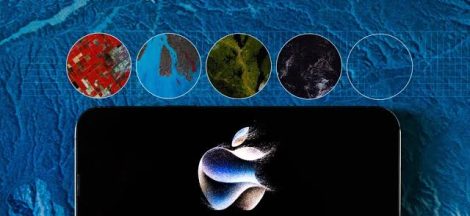It is 2007 and Steve Jobs has just announced the iPhone. The phone started a whole new category and redefined how we used our phones. People would stand in line to buy it because it was totally something new and the promise was enormous. The phone became a massive hit so much so that now iPhones make up for most of Apple’s revenue.
12 years after the launch of the first iPhone, the mobile phone industry is seeing its first paradigm shift since the original iPhone, foldable phones. While they might be ambitious in design and are surely the future of mobile phones, it’ll be quite sometime before they go mainstream.
They are still prototypes
There is no doubt that the foldable phones look amazing in promo videos. But when confronted with reality, you immediately see that there is a long way to go before they reach a level of polish fit for all consumers. Take the Huawei Mate X, you can clearly see how there are wrinkles when you unfold the device. This might only be a problem in the engineering samples shown but for now, we will take them for what they are.
The Mate X folds outwards, which means that the plastic screen is always exposed. Think about it, the screen is always exposed, folded or unfolded. So you’re always risking destroying your $2600 investment. Then there is the weird screen on the Galaxy fold. You can say that these are first gen errors, and you’re right. The problem is that it took years for these companies to get here. If fixing these issues was really that easy, they would have done it.
Then there’s the fact that many companies are still talking about the potential and only demonstrating concepts, case in point Oppo and Xiaomi. The fact that they are still teasing the platform suggests that we are still in initials stages and it’ll be a long time before every company jumps on the bandwagon.
Some like Apple have just started working on foldable phones. This might have been due to how early everything is or maybe because until recently Apple didn’t believe in them. We talk about Apple because they are key to the adoption of new products and ideas.
They’ll continue to be expensive for quite sometime
Foldable phones are supposed to provide an uncompromising experience. The promise of foldable phones is that you can take portrait shots without looking like the weird guy taking pictures with a tablet but when you want a tablet say for watching movies, you can have it.
Every year, smartphone prices increasing. You’re now getting an iPhone for $1000. So you can expect their implementation of a foldable phone to be at least a few $100s more than the price of iPhone. Same goes with Samsung and Huawei and in fact with any other mobile phone brand. They can’t cannibalize their sales of flagships by subsidizing their foldable phones.
Products go mainstream when masses use them. iPhone might have kickstarted the smartphone craze, but it was the affordable phones from Samsung, Oppo, Xiaomi and Huawei that paved the way for smartphones becoming so popular.
There will come a time when foldable screens will get affordable and you’ll be able to find foldable phones with budget specs. That’s when you’ll see them in mass adoption. Mass adoption will also lead to a very important trend, optimization. As more and more people buy foldable phones, developers will have the incentive to optimize their apps for the device. Google might release Android in such a way that the phone apps are scaled up for the device. But when we look at how Android tablets have fared, optimization matters.
What about normal phones?
Without a doubt, the biggest bottleneck in the adoption of foldable phones are normal phones. Foldable phones will always be more expensive than traditional smartphones, simply because they are more advanced and complex. You can pack a 3500 mAh battery in a phone and get exceptional battery life. For foldable phones, because they have a bigger screen you need a bigger battery, which increases costs.
Then there’s the issue of repairability. The iPhone with a simple glass back costs $100s to replace it, what about foldable phones? Plus it will be quite sometime before the expertise for such phones become available in your local shops.
But apart from the cost factor, the point is many people just don’t want a bigger screen. Samsung demoed how you could use the bigger screen for 3 way multi-tasking. Ask yourself, do you really need it? I’m not saying that they are useless, they do elevate the experience in many cases. However, many might not need the bigger screen. For them, a Galaxy S10 is more than enough and in many cases even better. The only way foldable phones can win them over is if they provide the same raw specs at the same price which is impossible for reasons mentioned earlier.
At least 4-5 years before you see mainstream adoption
If you look at the smartphone trend, you’ll see that it takes around two years for any feature to become mainstream. That is for that feature to be available on budget devices. Be it the fingerprint sensor on the iPhone 5s or the dual camera on the iPhone 7 Plus or water resistance on the Xperia lineup or Wireless charging on the Galaxy S6. It took roughly around 1-2 years for these features to be available on popular budget phones. That’s why you’re still not seeing triple cameras, or in display fingerprint sensor in budget phones despite the fact that they were introduced over a year ago.
The premise was that a very polished and refined version of the mentioned features was commercially available on top of the line flagships. But foldable phones are still in infancy and despite their luxurious price tags, their implementation is still quite finicky.
We think that the implementation will mature in the next two years and be good enough for everyone and not just early adopters. In addition to that, we can add another year or two before the prices drop significantly for them to be accessible to everyone.
The biggest question is how will the world look like in 4-5 years? What if people are able to crack the AR formula? Imagine, If AR headsets start to look like standard spectacles and cost as much as a foldable phone? What if a new technology comes around and disrupts everything. 4-5 years is a long time, so who knows what might happen next. We can only make predictions at best.









 IT Minister visits Mobile World Congress, what does it mean for Pakistan?
IT Minister visits Mobile World Congress, what does it mean for Pakistan?